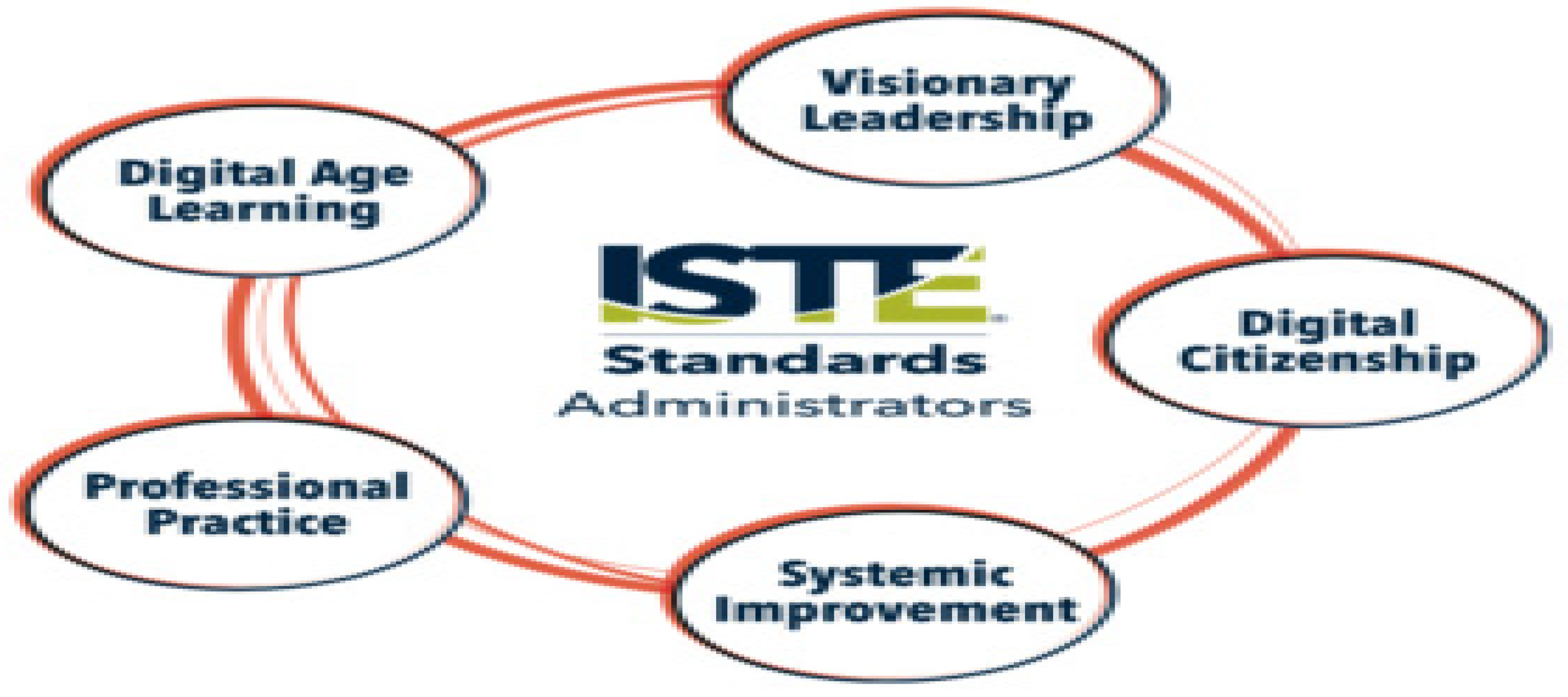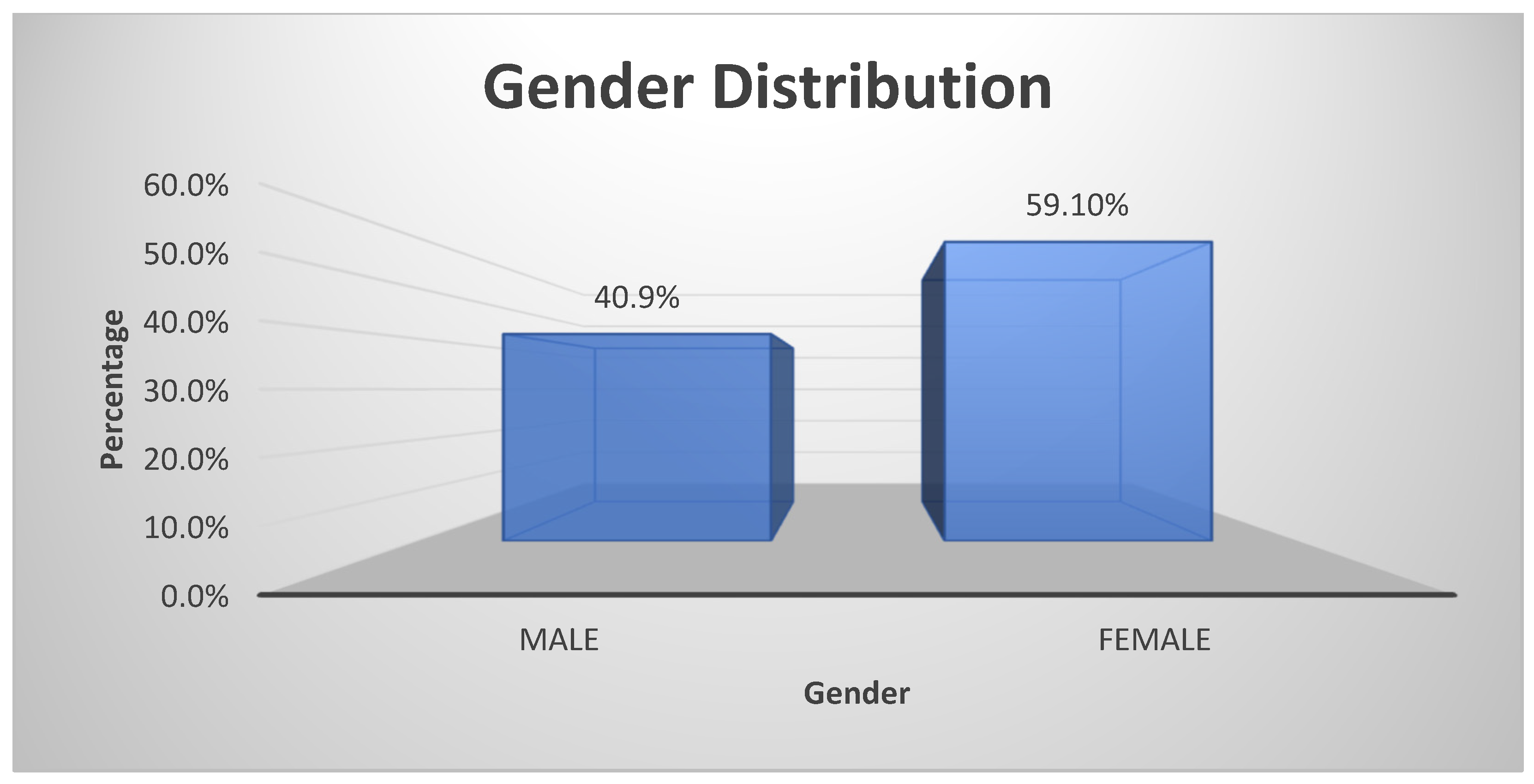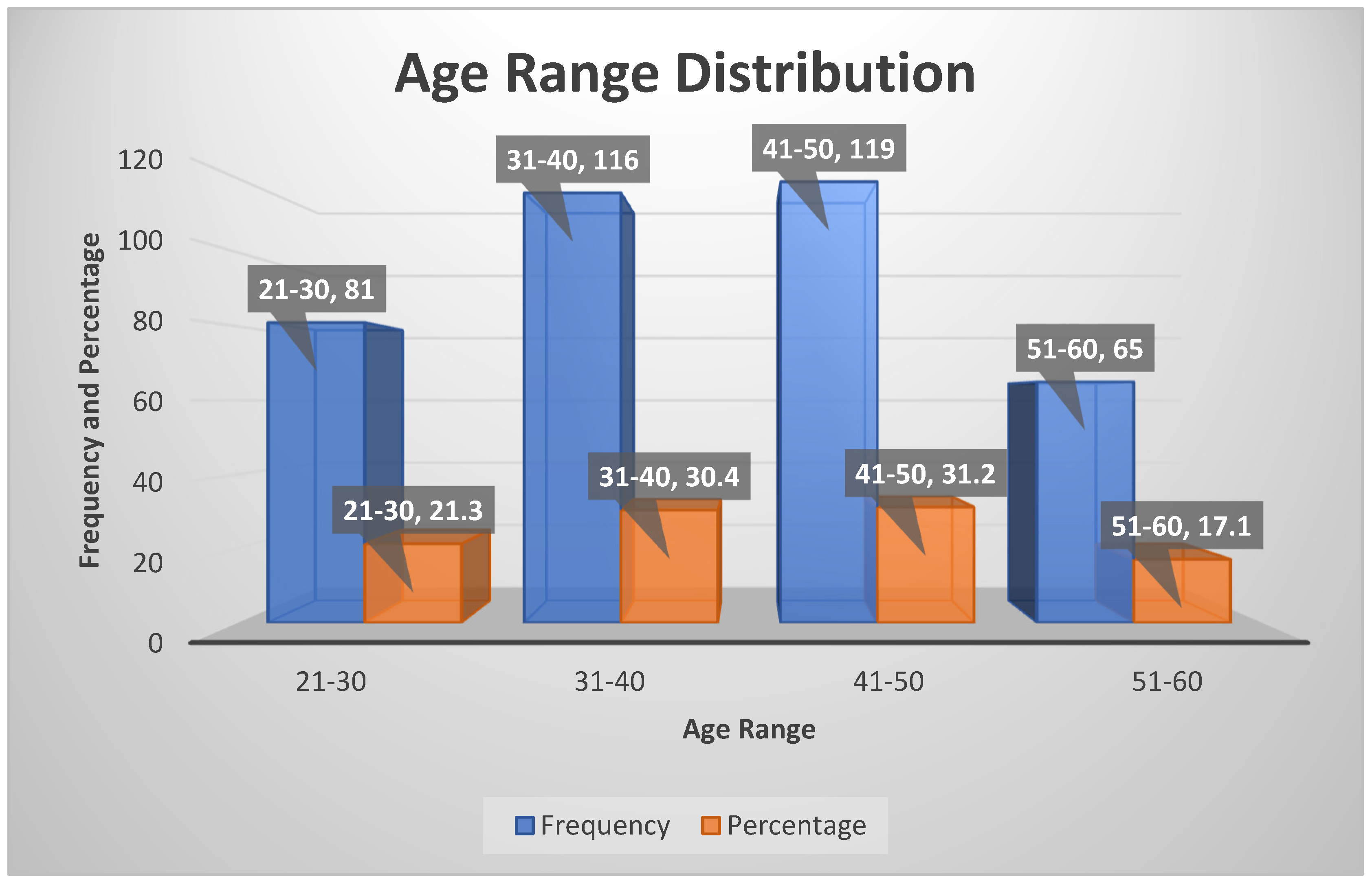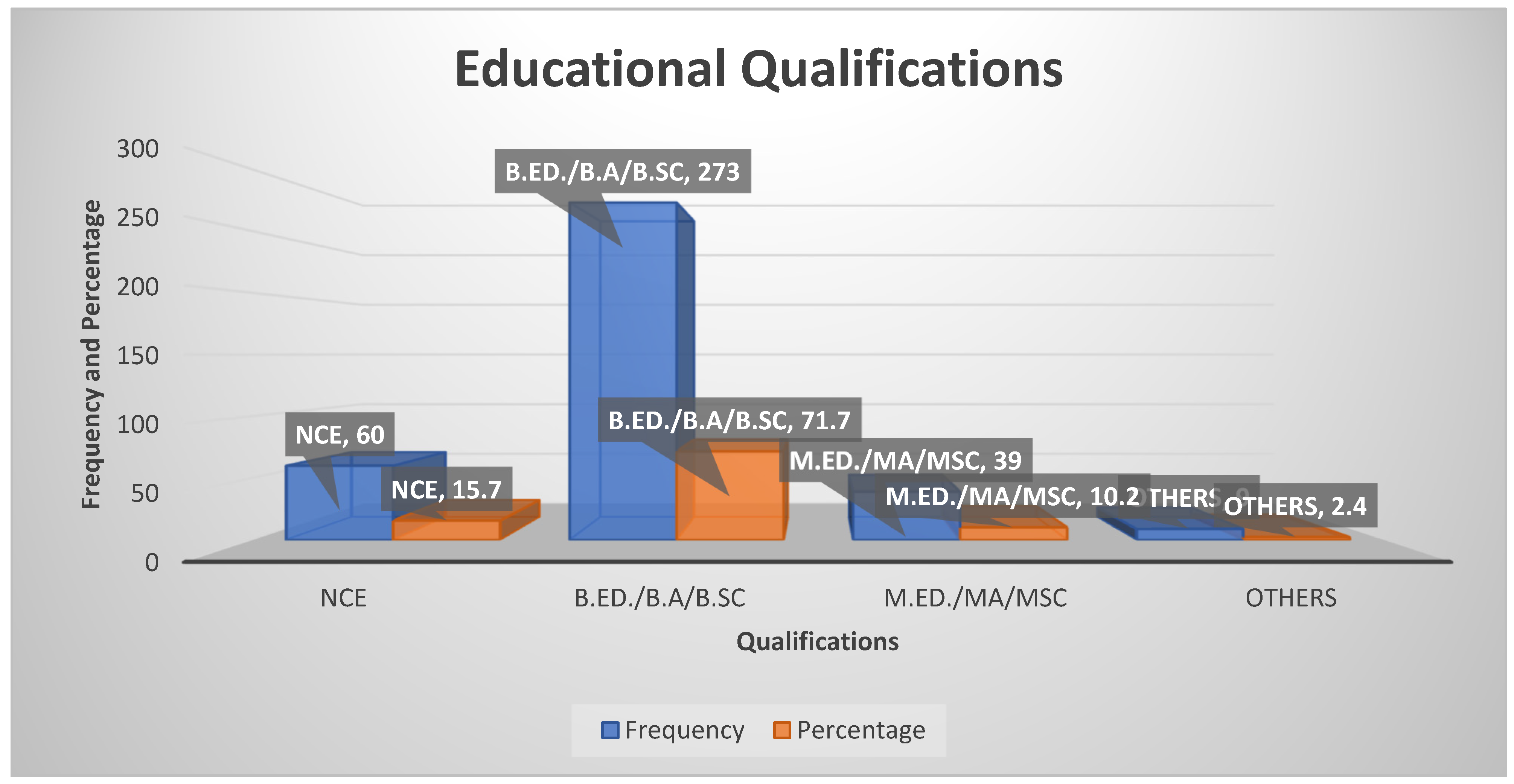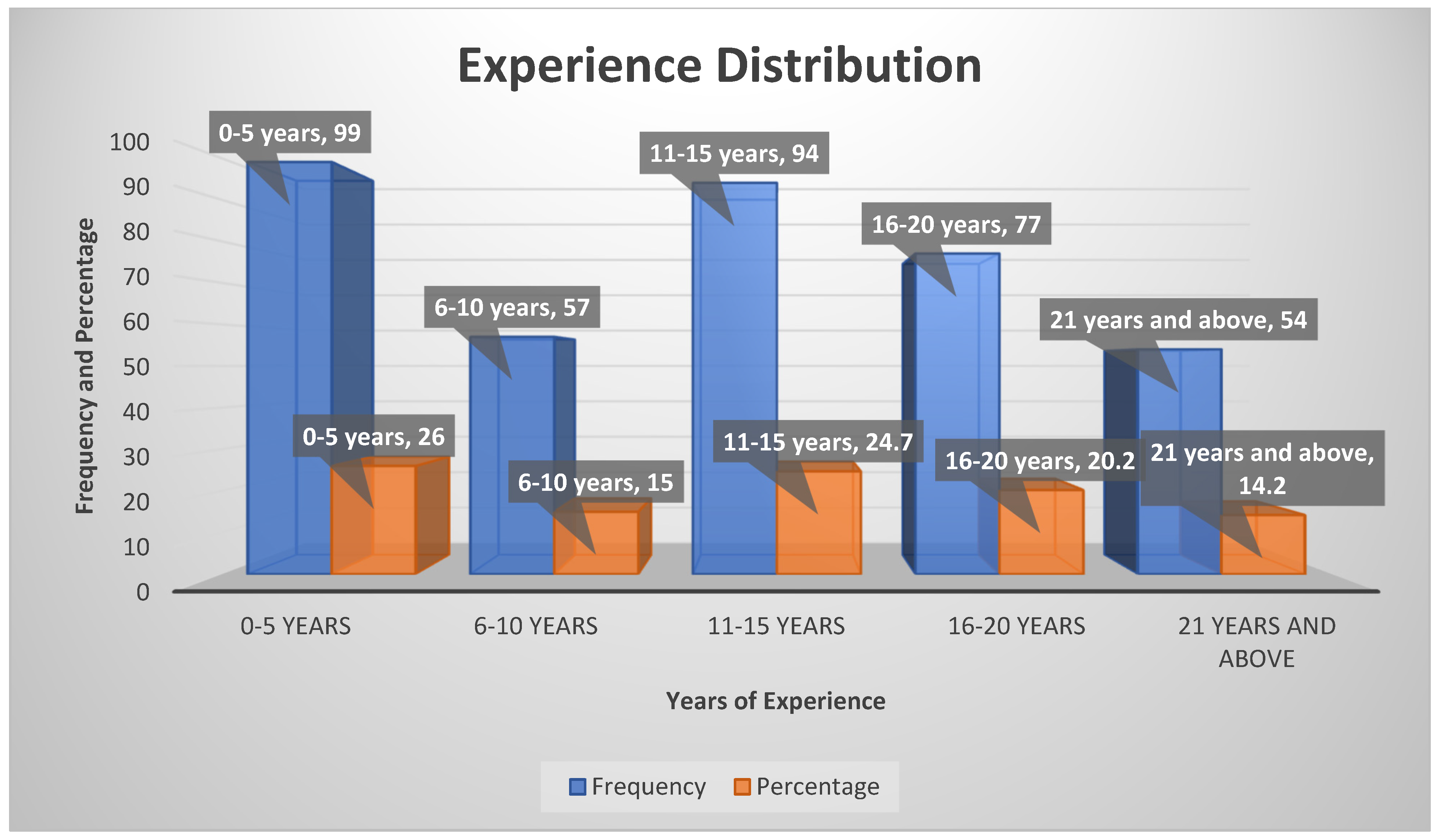The Fourth Industrial Revolution (4IR) is taking its toll on several human endeavours by adding digital values and virtues to the societal ecosystem. The vast impacts of digitization are not limited to communication, aviation, health, the public sector, the economy, defence, and education (
Okunlola et al., 2024). The 4IR signifies the era of digital technologies’ convergence involving physical, biological, and social systems, fundamentally altering how we live, work, and learn (
Datta, 2023). The 4IR has changed pedagogical modes across the globe. However, traditional teaching–learning may still exist in rural and remote communities disadvantaged by the digital divide. Digital transformation, birthed by the 4IR, has also crept into the realm of educational leadership. Traditional leadership styles are believed to be incapable of effectively addressing the opportunities and challenges brought about by the 4IR. As a result, digital leadership evolves (
Mo et al., 2023). Therefore, a new dimension of digital leadership emerges with the 4IR (
Avwokeni, 2024;
Rogers, 2016). It is safe to state that digital leadership is an offspring of the 4IR, as this emerging leadership style is flying on the wings of technological innovations and advancement.
Hence, leading schools in the 4IR are changing rapidly from traditional face-to-face leadership to digital leadership. The emergence of digital technologies in the 4IR calls for principals’ technology integration to support teaching–learning processes (
Zhong, 2016). Moreover, the phenomenon of globalization is putting leadership ideologies to the test; as a result, high school leaders must adapt to this digital change to have a competitive edge in an ever-evolving future (
Brooks & Ezzani, 2022;
Hariri et al., 2016;
Riski et al., 2023). In digital leadership, school leaders are required to act as digital leaders who, in turn, lead innovative and technological ideas to formulate and reformulate the vision and mission of their organizations. In other words, organizational leaders must adopt and imitate digital leadership as a new paradigm shift to lead successfully and efficiently (
Avwokeni, 2024;
Guzman et al., 2020;
Herder-Wynne et al., 2017;
Oberer & Erkollar, 2018;
Rogers, 2016). Digital leadership is characterized by strategically using technology and data to achieve organizational objectives, vision, effective communication, influence, and technological proficiency (
Ismarsanto et al., 2023;
Khan, 2016). Considering its developmental evolution and velocity, digital leadership gradually assumes a global phenomenon.
However, the International Society for Technology in Education (ISTE) published the ISTE Standards for Administrators (ISTE-A) in 2009; there is still a research gap because there are not enough studies on the indicators of digital leadership (
Zhong, 2017). The ISTE-A standards require leaders to exhibit five dimensions of skills and knowledge: visionary leadership, digital age learning culture, excellence in professional practice, systemic improvement, and digital citizenship to qualify as digital leaders (
Zhong, 2016). It is noteworthy that the overall ISTE Standards for Administrators demonstrate how strong standards are provided by the ISTE-A to aid and support principals in their roles as digital leaders (
Hamzah et al., 2021). Meanwhile,
Veithzal and Rony (
2024) affirmed a surge in research interest in digital leadership, but few studies have investigated digital leadership indicators or competencies required of a digital leader (
Karakose et al., 2021,
2022;
Zhong, 2017). Scholars’ recent interest in investigating digital leadership seems to underscore its significance in organizational governance and school administration. Further study on digital leadership is necessary, according to
Indrio and Herachwati (
2024), who also claimed that digital leadership is becoming more and more critical in the age of digital transformation. Still, studies on it are few compared to other leadership styles. Hence, school administration cannot ignore the speed of technological innovations being born daily in the 4IR era.
Wu et al. (
2020) cautioned school leaders to adapt to change and resist reluctance to embrace digital and information communication technology (ICT) skills. School administrators are expected to take the lead in spearheading and maintaining the integrated use of technology in education by incorporating it into their regular management practices (
Aslam et al., 2020). Technological advancements will continue to evolve in the 4IR, so school administrators must adapt to change (
Aslam et al., 2020;
Pribadi et al., 2024).
The 4IR era has brought about transformative changes that have reshaped teaching and learning processes and school administrative functions. Thus, principals must become proficient in digital technology, including leadership qualities specific to digital technology (
Wu et al., 2020). However, embracing new tools alone will not be enough to realize digital technology’s educational potential fully; this requires demonstrating specific skills and competencies by high school leaders. Leadership becomes crucial in high schools, where students prepare to navigate a rapidly evolving digital landscape. In addition to influencing how digital technologies are incorporated into instruction, high school leaders also significantly impact the ethos and attitude of the school community around technology use. Yet, there is a gap in understanding the digital leadership skills or competencies required in high school settings within the 4IR by high school leaders. As a result,
Veithzal and Rony (
2024) posit that companies and academia are developing a keen interest in digital leadership due to the transformative benefits of digitalization.
Meanwhile, this study primarily focuses on teachers’ perspectives in presenting a critical lens through which to evaluate digital leadership competencies, because they reveal how the ISTE-A standards are operationalized daily. Teachers are frontline implementers who directly experience how leadership decisions translate into classroom activities. As a result, their feedback can expose gaps between policy propositions (e.g., the ISTE-A standards) and practical execution, especially in resource-constrained settings like Nigeria, where infrastructure and training disparities exist. Prior studies (
Hamzah et al., 2021;
Zhong, 2017) contend that teacher buy-in is a prerequisite for sustainable digital transformation, indicating a school’s digital readiness. Hence, this study investigated the gap by examining the skills and competencies of high school leaders in meeting the ISTE-A digital leadership standards in school management in the context of the 4IR. In achieving this research objective, one research question was raised, and two hypotheses were formulated and tested at the 0.05 level of significance.
The main purpose of this study is to investigate how high school leaders meet the ISTE-A digital leadership standards in school management.
1.1. Literature Review
Digital Leadership
The emergence of digital leadership remains elusive, but some extant literature credits its evolution to certain authors. The word “e-leadership” is credited to
Avolio et al. (
2000), whereas
Fisk (
2002) is credited as the first author to use the term “digital leadership” in scholarly writing and states as follows: “The digital leaders must possess a visionary mindset and are adept at driving change. They have the ability to integrate ideas within the organization to execute projects and facilitate partnerships, joint ventures, outsourcing, and other collaborative endeavours.” (
Veithzal & Rony, 2024). The idea of digital leadership has since been described in a variety of ways by different scholars. Digital leadership refers to the social influencer’s use of technology to modify an individual’s or an organization’s emotions, actions, attitudes, and outcomes (
Stana et al., 2018). Digital leadership, according to
Antonopoulou et al. (
2021), is the ability to effectively manage human resources and technology usage while utilizing information and communication technologies to achieve specific project goals. Some scholars, too, have termed this leadership phenomenon heralded by digital emergences and innovations with different phrases such as remote leadership, electronic leadership, virtual leadership, and e-leadership (
Avolio et al., 2000;
Prahmana et al., 2021;
Riski et al., 2023;
Waruwu et al., 2023).
In addition,
Zhong (
2017) describes digital leadership as: the “application of instructional technology such as digital device, service, and resources to inspire and lead school digital transformation, create and sustain digital learning culture, support and enhance technology-based professional development, provide and maintain digital organization management, and facilitate and manage digital citizenship” p. 28. Another similar definition is that of
Magesa and Jonathan (
2019), who also emphasized that digital leadership leverages information technology to leadership styles (
Ismarsanto et al., 2023). This implies that the core objective of digital leadership is never to obliterate existing leadership styles that have been established for ages but rather to play supportive, innovative, and transformative roles demanded by the 4IR. In other words, digital leadership only seeks to enhance leadership in the 4IR by applying digital tools. To these researchers, digital leadership influences those being led toward realizing organizational goals through the operation of digital technologies by leveraging existing leadership styles, philosophies, or ideologies.
Today, more than ever, digital leaders’ roles in driving digital transition are urgently needed if tangible results are achieved across the globe, as witnessed in higher education institutions such as those in Greece. Hence, those leading digitalization efforts in educational institutions must acquire digital skills and competencies that are urgently demanded (
Antonopoulou et al., 2021). Additionally, digital leaders should function in these capacities: they should encourage staff members to apply knowledge gained from their personal experiences; they should disseminate knowledge among team members to foster a more profound comprehension; they should enable internal knowledge sharing; and they should bring in outside insight (
Veithzal & Rony, 2024;
Zupancic et al., 2018).
Meaning of the International Society for Technology in Education (ISTE) Standards
The International Society for Technology in Education (ISTE) is a non-governmental organization that partners with the global education community to promote and accelerate the use of technology in education for innovation and problem-solving (
Affan, 2024). The ISTE has established standards for school leaders, guiding their technological professional practice and focusing on teaching, learning, and digital leadership (
Al-Matri & Al-Rasebeah, 2021). The ISTE standards were recently revised to reflect the evolving nature of learning. The revised standards have four components that offer a thorough framework for coaches, educators, educational leaders, and students. The ISTE Standards are research-based and can be adopted in various ways by schools, districts, or states. They guide system-wide planning, professional development, curriculum mapping, lesson design, learning management systems, teacher preparation, job descriptions, and hiring decisions (
ISTE, 2018).
Moreover, the ISTE released the ISTE Standards for Administrators (ISTE-A), a digital leadership standard for administrators. The ISTE-A Standards provide a guideline for school administrators to foster leadership. It outlines five dimensions of digital leadership: visionary leadership, digital age learning culture, excellence in professional practice, systemic improvement, and digital citizenship (
Hamzah et al., 2021). The ISTE-A Standards are graphically represented below in
Figure 1.
Visionary Leadership: Educational administrators lead the development and implementation of a shared vision for technology integration, promoting excellence and transformation. They inspire stakeholders, facilitate change, develop and communicate technology-infused strategic plans, and advocate for policies, programs, and funding to support this vision and strategic plan (
International Society for Technology in Education Standards for Administrators [ISTE-A], 2009). Educational administrators lead the development and implementation of a shared vision for technology integration. They advocate for policies, programs, and funds to support this vision and strategic plan. They also motivate stakeholders, promote change, and create and convey technology-infused strategic plans.
Excellence in Professional Practice: Educational administrators foster a learning environment that empowers educators to enhance student learning by integrating modern technologies and digital resources. They allocate resources for continuous professional growth, facilitate learning communities, promote effective communication, and stay updated on educational research trends (
International Society for Technology in Education Standards for Administrators [ISTE-A], 2009).
Systemic Improvement: Educational administrators use digital age leadership to continuously improve organizations by effectively using information and technology resources. They lead change, collaborate on data collection and analysis, recruit competent personnel, establish strategic partnerships, and maintain a robust technology infrastructure for management, operations, teaching, and learning (
International Society for Technology in Education Standards for Administrators [ISTE-A], 2009).
